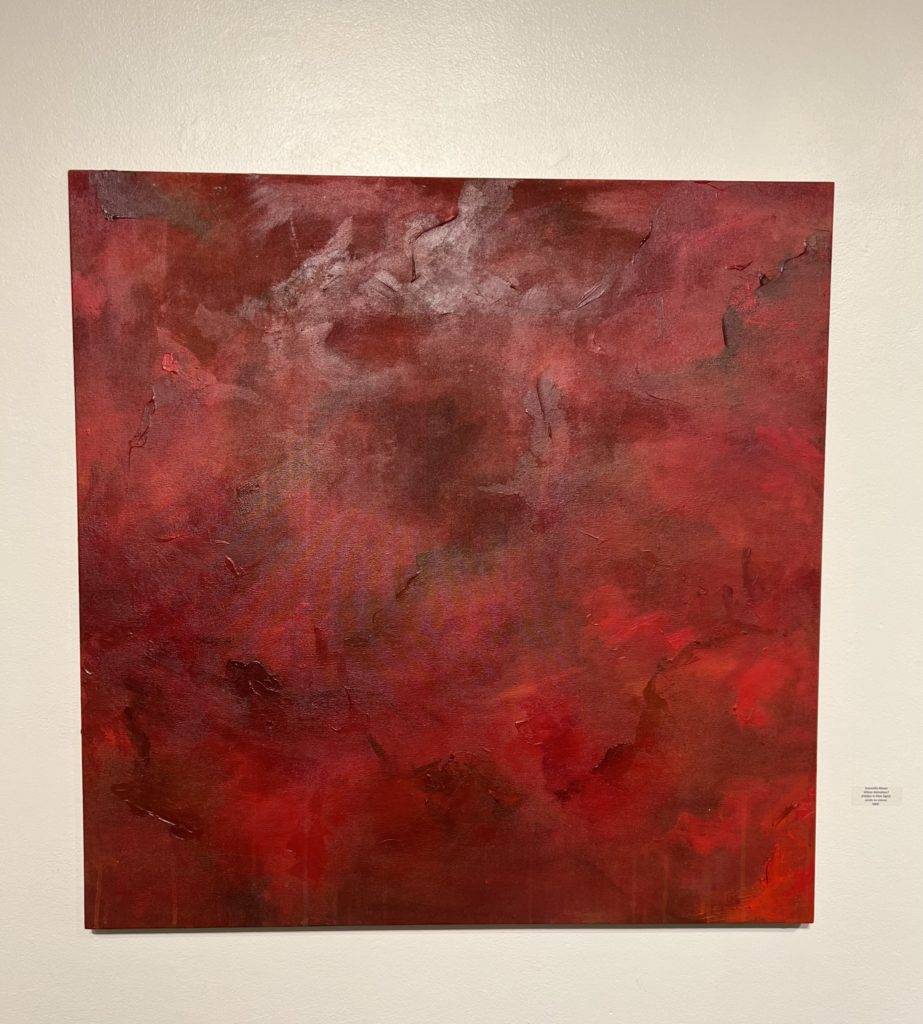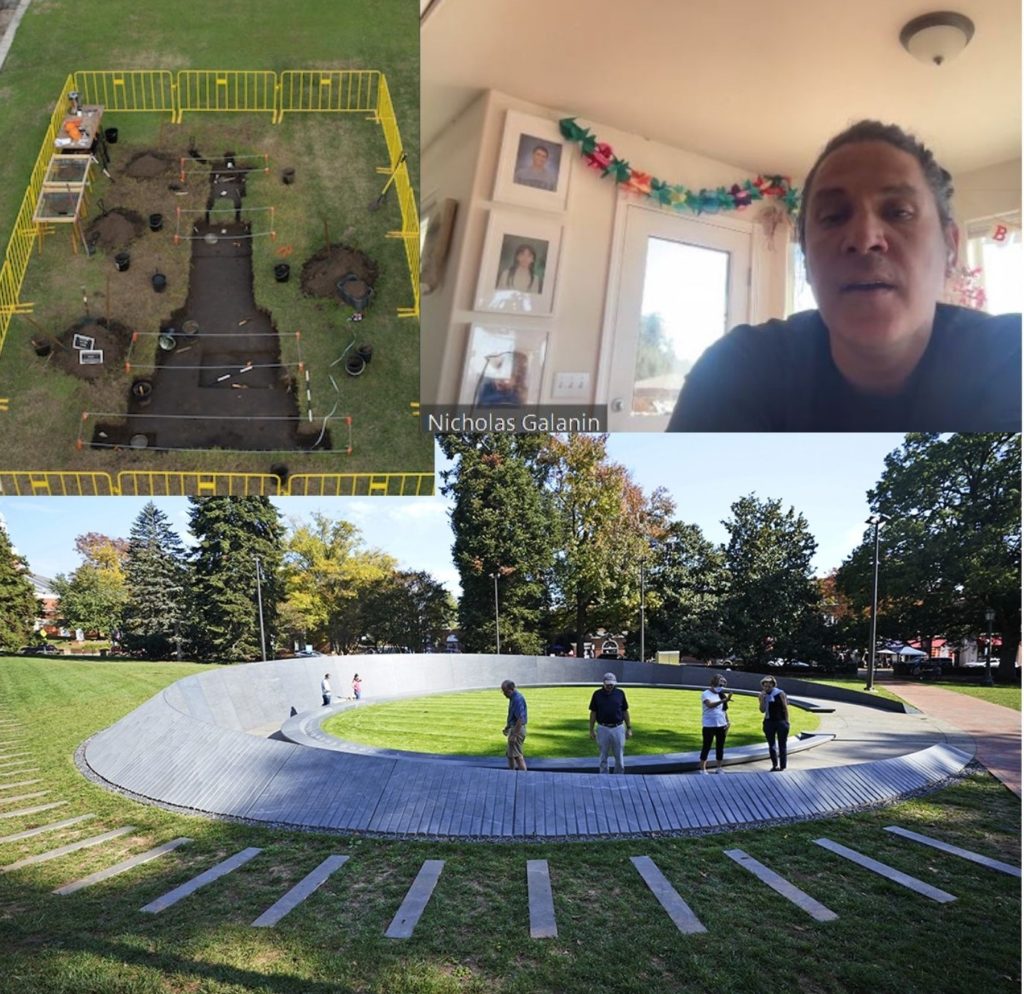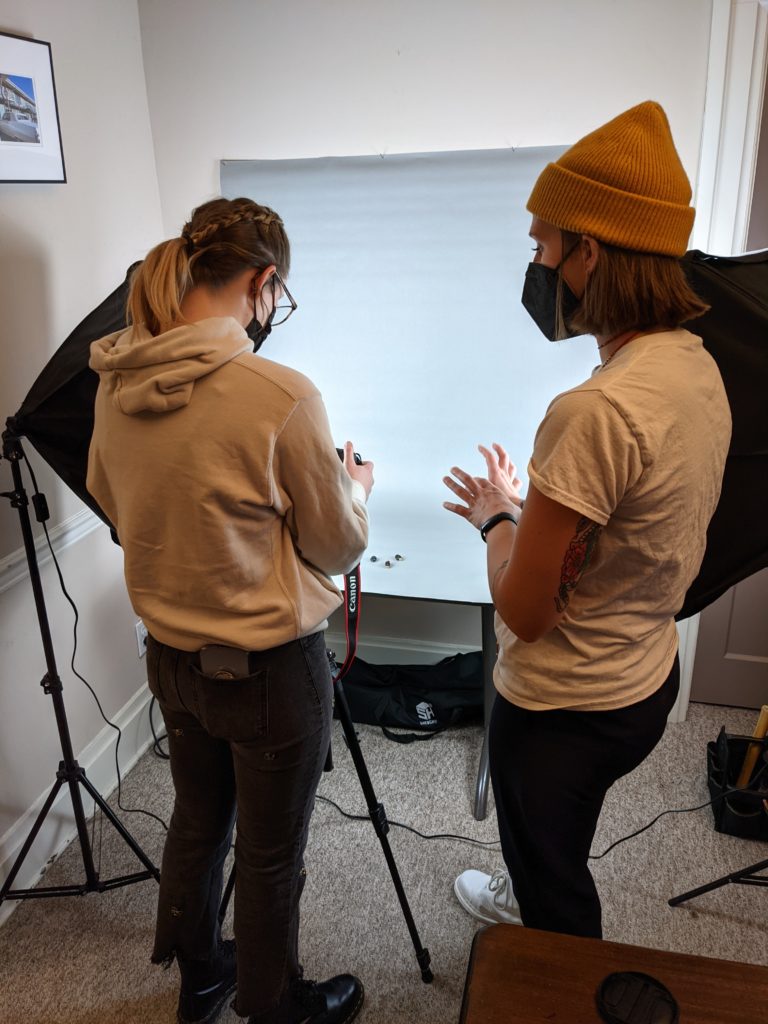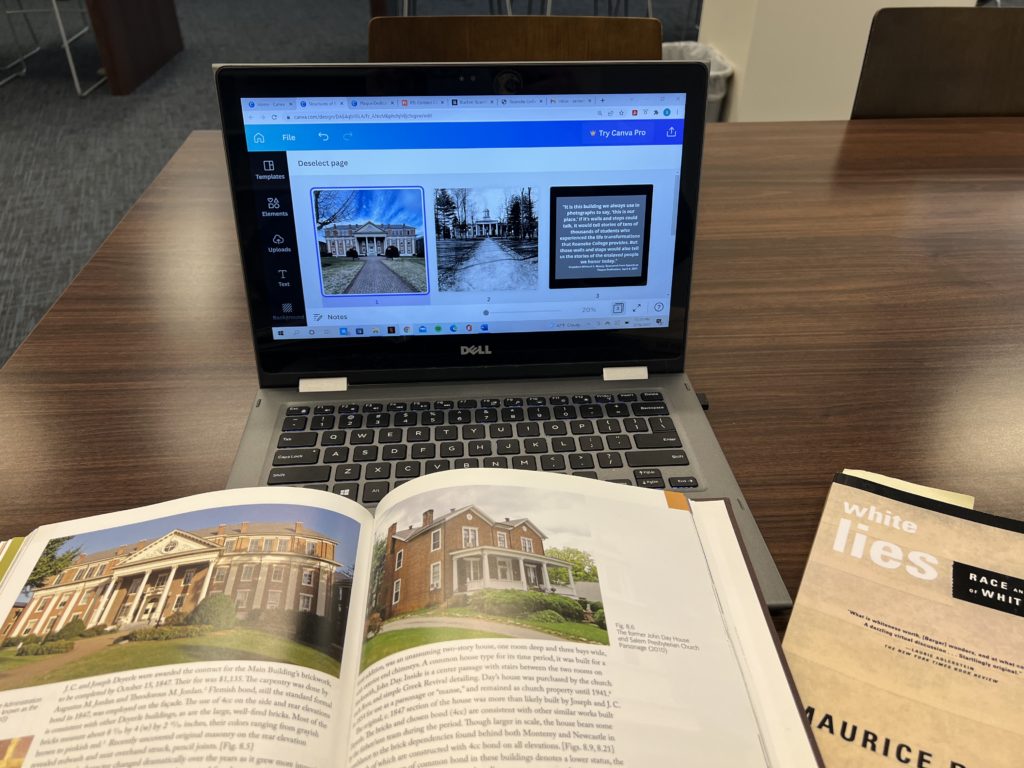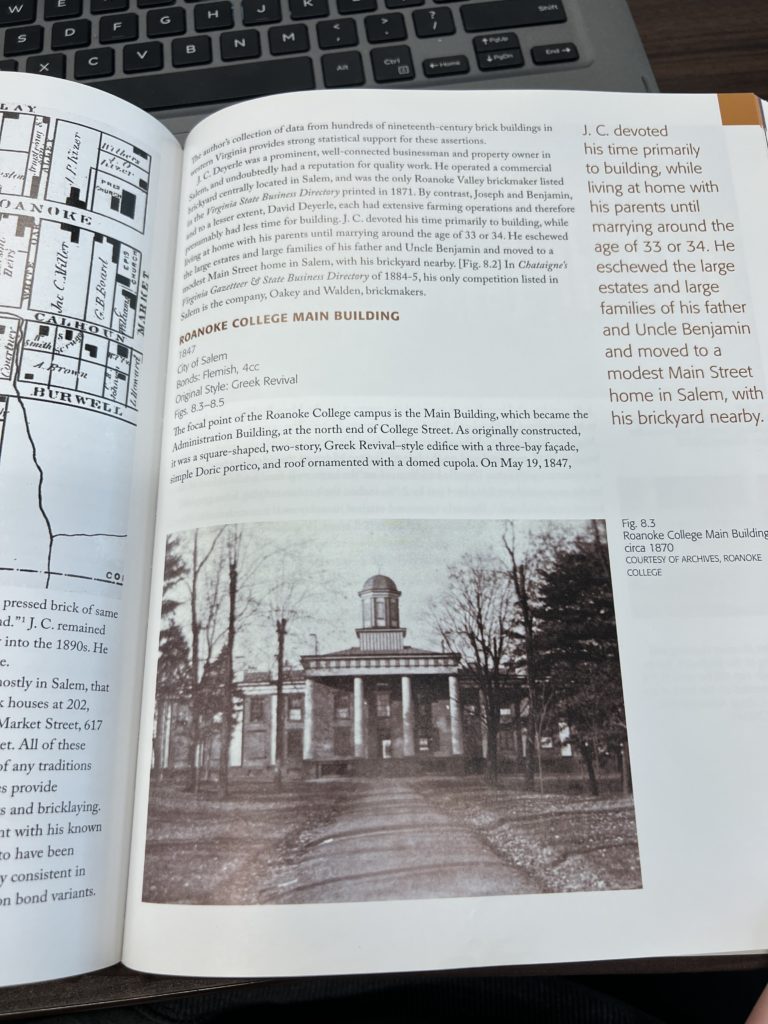In this next week, I will be wrapping up my internship with Roanoke College’s Center for Studying Structures of Race. I will be leaving this internship with a ton of knowledge about Roanoke’s racial history and how much hard work it is going to take in order to erect our own public monument for the enslaved laborers who contributed to the college. I have been listening to and transcribing an interview between Dr. Jesse Bucher and architect Mabel O. In the interview, Wilson gave a very in depth discussion about what UVA’s process was like erecting their enslaved laborers memorial. In addition, our last speaker was the influential Henry Louis Gates and he gave an incredible talk about the history of Reconstruction and answered many questions from the audience members. Gates ended his talk by saying, “We say that history often repeats itself, but it only repeats itself if we let it.”
I have been incredibly inspired by my work with the Center and I even completed a painting in my other coursework reflecting on Roanoke’s history of enslaved labor. I am by no means done with CSSR. I will continue to attend the collaboration meetings between the Center, Creative Time, and a variety of community members but this time, not as an intern but as a Roanoke College alum. I can’t wait to see the work that the Center for Studying Structures of Race continues to do.

